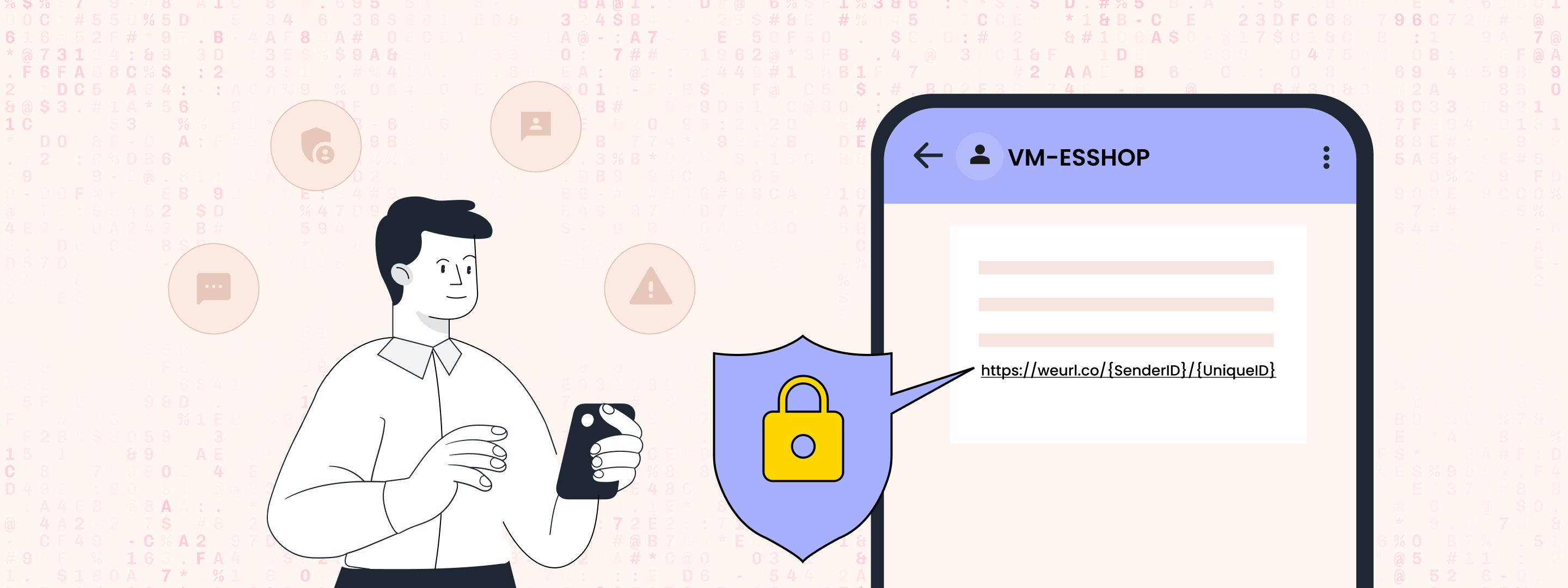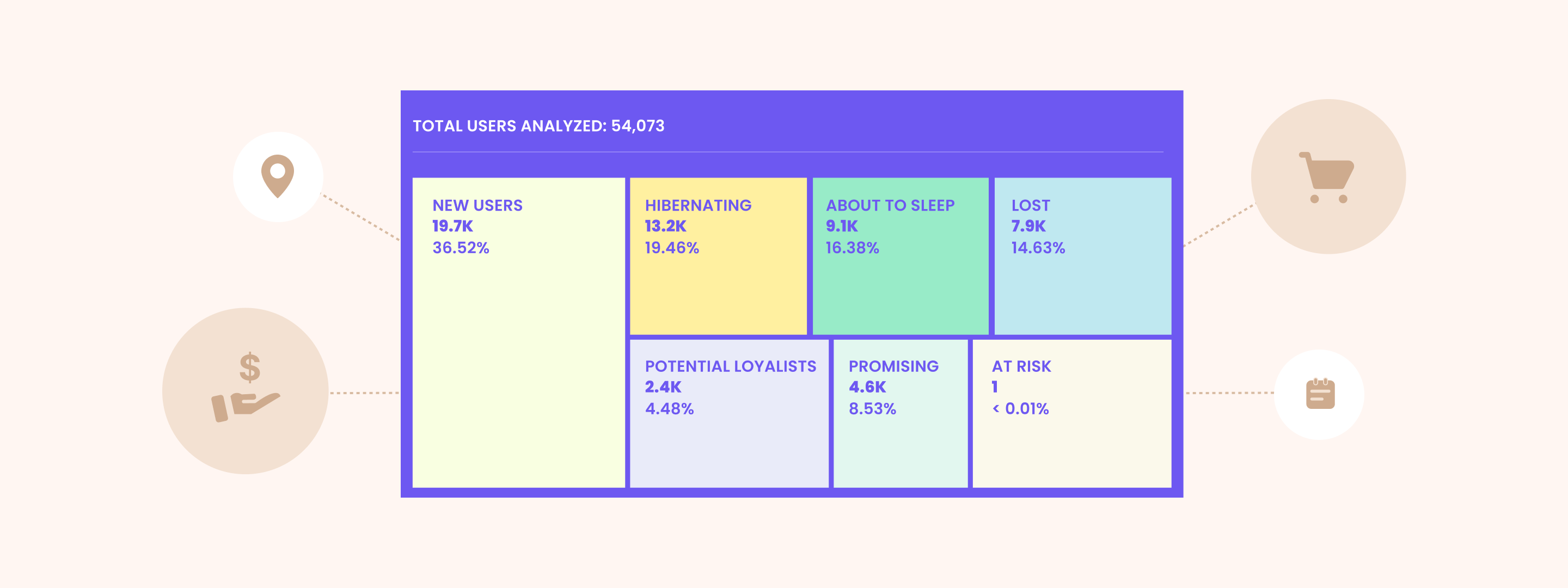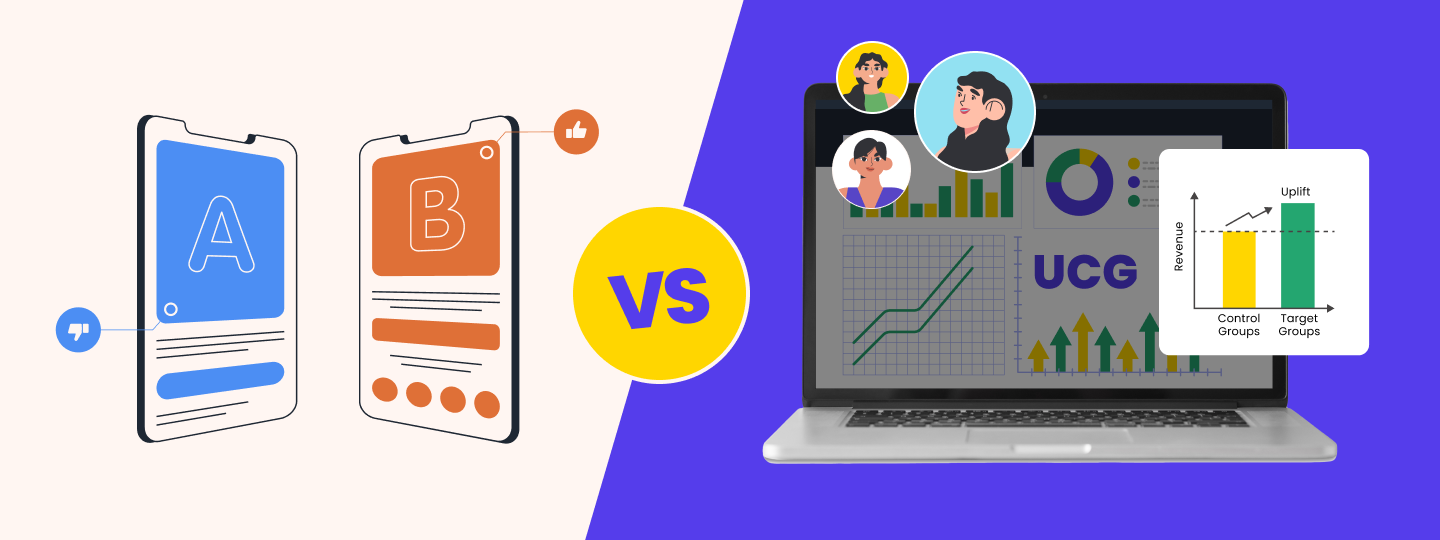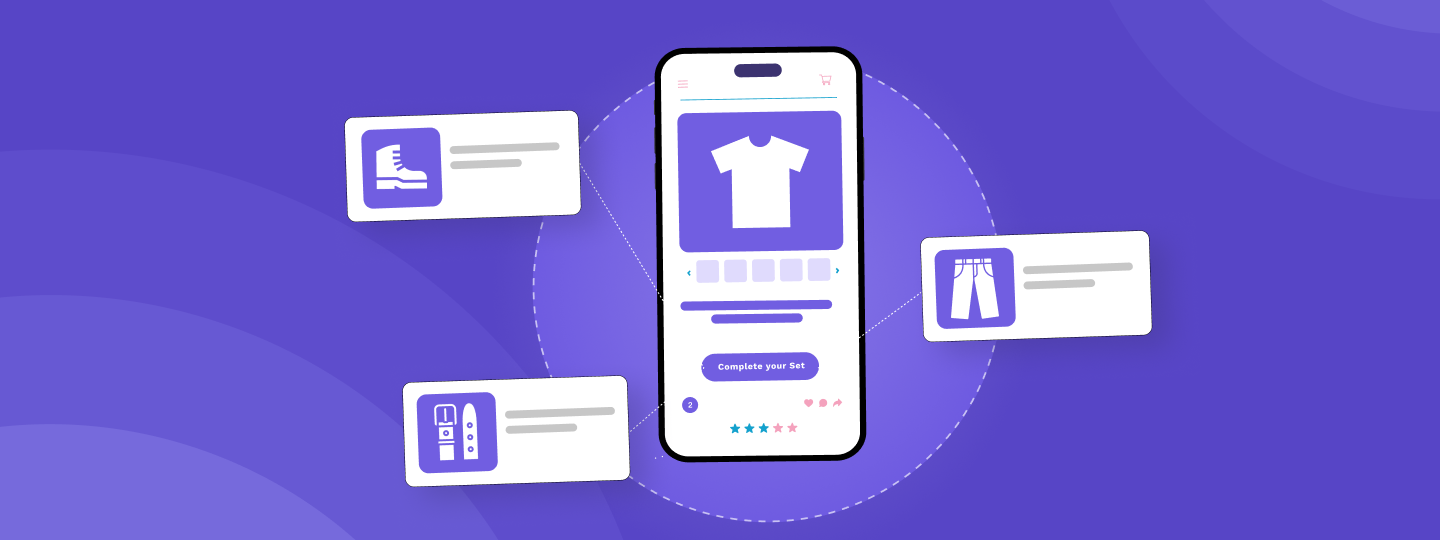If you’re an e-Commerce company stuck on a channel or two, it’s high time to widen your marketing horizons.
Why?
e-Commerce customers are no longer limited to a single channel. They prefer bouncing through various channels and touchpoints before zeroing in on a purchase.
Consumers today are dynamic in nature. Their preferred channels to interact with a brand can change by the day. So connecting customers via a channel or two is a lost cause. That’s where a multichannel marketing strategy becomes important to have.
Before we dive into how to create a multichannel marketing strategy, let’s give you a quick recap of what it is:
Multichannel marketing is a technique used to sell products and engage with customers through multiple channels. For example, combining channels like social media, SEO, email marketing, web push, SMS marketing, etc, to ensure your brand remains at the top of their minds throughout their customer journey.
So while multichannel marketing uses a variety of channels to reach out to customers with the same content, omnichannel builds upon interactions in order to advance the customer journey at any touchpoint.
Pro tip: If your business goal is to establish a better brand recall and cut through the digital noise, we recommend using multichannel marketing.
In this post, we’re going to look into how you can create a multichannel marketing strategy for your e-Commerce business.
How to create a multichannel marketing strategy for e-Commerce
While you can approach creating a strategy in many ways, here are ten steps we recommend following when you’re getting started with e-Commerce multichannel marketing:
1. Explore Platforms Where Your Audience Exists
Identify and explore platforms that bring you online traffic and conversions, as these indicate a strong presence of your target audience.
Start by looking into your website analytics using a tool like Google Analytics, social media insights on Facebook, Instagram, and/or YouTube, and analyze other channels that are a part of your e-Commerce sales funnel – this includes email marketing, web push, SMS and possibly every channel you’ve been marketing on.
Say you’re an online cosmetics brand. Your users will most likely shop with your brand through cross-channel engagement on channels like social media, WhatsApp, and your website.
Analyzing top revenue-fetching and engagement-driven platforms lets you start on a definite path to creating a multichannel marketing strategy rather than assuming audience presence.
PS. It’s important to also note that these channels or platforms may look different for different audience segments. While GenZ actively uses social media to shop online, millennials are still more receptive to email, push and SMS marketing.
2. Create A Buyer Persona
A buyer or customer persona details a hypothetical customer by gathering their traits, demographics, pain points, preferences, goals, etc.
Why is this important for e-Commerce multichannel marketing?
Creating an ideal buyer persona acts as a blueprint to identify your current and future customers and their behaviors and map out their potential journeys leading to a purchase.
An e-Commerce buyer’s personas need not be limited to customers’ traits or pain points. Try diving deeper into collecting their purchase frequencies, preferred communication methods, modes of purchase, devices used to browse and purchase products, etc.
To start creating a buyer persona, you can:
- Talk to your current customers and ask for feedback
- Gather customer-related data by running post-purchase surveys and using analytical tools
- Talk to your internal sales and marketing teams to better understand customers’ interactions
- Take note of e-Commerce affinity patterns to learn interests and intent
For example, a buyer persona for an online fitness accessories store can look like this:
- Name: Jane Smith
- Age: 29
- Job: HR manager
- Lives in: San Francisco
- Annual income: $80,000
- Buys for: Product quality, repurchases, and a wide range of fitness products
- Pain points: Product reliability and effectiveness
- Research channels: Instagram, website stores, Google
3. Conduct Audience Segmentation
Audience segmentation means dividing your target market into multiple segments based on common grounds, such as similar behavioral data, demographics, purchase tendencies, etc.
Real-time customer segmentation allows you to align your chosen marketing channels and messaging to resonate with a particular audience segment.
With targeted segments, you can personalize messaging to engage potential customers better and move them rapidly down your e-Commerce sales funnel.
e-Commerce companies, for example, can gather customer data for segments during a purchase and trigger actions that move the customers closer to completing the purchase. Suppose a customer quits your online store and leaves it in the shopping cart without purchasing an item. In that case, you can send such customers an email and SMS encouraging them to finish where they left off.
Similarly, you can create customer segments based on website activity. Say a user has browsed through your website shopping page. You can target them by displaying mobile push notifications and persuading them to revisit your site.
4. Map Your Customer Journey
Customer journeys sum up the experiences customers have while interacting with your brand. So undoubtedly, understanding a customer’s journey will help you serve them better and create an optimized multichannel experience.
Mapping helps you strategize your multichannel marketing efforts and, basically, connects the dots.
Once you have the segments ready, start visualizing each customer segment’s journey using a customer journey map. Map out each step the customer might take, right from product awareness to purchasing it.
Here’s an example customer journey map for a cart abandoners’ customer segment:
5. Assign Priorities To Channels And Devices
Shoppers may prefer a channel and a device more than the rest. For example, social media like Instagram and mobile devices.
Track your customers’ activities and engagement across your brand’s online presence to find the channels and devices they have an inclination to. Then look at the revenue each audience segment on each channel is driving for your business.
Next, assign priorities to each of them so you can leverage channels and devices accordingly and see the maximum impact, such as increased sales, traffic, or leads – and of course, ROI.
6. Carry Out Seamless Integration Of All Channels
Integrating key channels ensures consistency in all your multichannel marketing efforts. Doing so also improves customer experiences while interacting with your brand. Customers are also not left hanging at any point, regardless of their unique journeys.
Tying in channels together means making them work smoothly in tandem by complementing each other. Integrating can also deliver relevant content via customers’ preferred channels and multiplies the chances of conversion.
For example, integrating mobile or web push notifications with emails and SMS to notify customers of an ongoing discount for Christmas. Customers should be able to choose their preferred platform to browse and purchase products without any friction.
7. Support Web Personalization
E-Commerce web personalization involves personalizing each customer/visitor’s website experience by offering tailored product recommendations, using dynamic website content to engage them better, displaying personalized web notifications, and more.
Web personalization has the highest conversion rates due to its ability to deliver hyper-personalized website experiences based on user actions or segments.
Suppose a customer buys home supplies on the 1st of every month. You can use web personalization to remind them to restock their supplies with a mobile push notification and curate product recommendations. Also, tie on other channels like email and WhatsApp to send them a reminder on the same.
8. Enhance Customer Support
Long wait times to get queries answered can frustrate your e-Commerce customers. And it wouldn’t take long for them to quit your site and jump to your competitors for options.
Therefore, efficient customer support is another feather in your cap while implementing a successful multichannel marketing strategy. It enhances the overall customer experience and turns new customers into brand loyalists.
Using smart automation for customer support, such as automated AI chatbots, can offer 24/7 real-time assistance to customers without delayed responses or facing time-zone differences.
9. Measure Your Performance
Measuring the performance of your multichannel marketing strategy leads your future efforts in the right direction and uncovers anomalies.
Here are four key performance indicators (KPIs) you must track regularly to measure your performance:
KPI #1. Brand awareness
How well are potential and target customers aware of your brand and offering? Measure how effectively you can drive brand awareness through your chosen channels, for example, Google Ads, social media, emails, SEO, etc.
The metrics you must track are:
- Cost per impression (CPM) to determine your brand’s visibility by calculating ad impressions.
- Social media engagement metrics like the number of shares, likes, and comments on posts.
- Website traffic to calculate the number of page views and bounce rate and track user activities.
Bonus read: Difference between Brand engagement and Customer engagement
KPI #2. Conversions
Post the awareness stage comes the conversion stage, when a potential buyer turns into a purchasing customer.
The metrics you must track are:
- Conversion rate to calculate the total number of unique visitors across channels who converted to buyers.
- The average order value for each channel.
KPI #3. Customer retention rate
Ensure you track your average retention rate since selling to existing customers is better than acquiring new ones and selling to them,
Also, calculate the customer lifetime value and churn rate to understand if your multichannel marketing strategy needs a reboot.
KPI #4. Brand advocacy
Your happy customers turn into brand advocates, recommending your products to their friends and family. So ensure you track this metric to measure performance.
The metrics you can track are:
- Product reviews on your website and product mentions on social media sites.
- Net Promoter Score (NPS) to understand customer loyalty.
We recommend using funnel analytics in order to attribute the success at each stage of the buyer journey more accurately. This also goes back to helping you identify and assign priorities to the best performing channels.
10. Optimize
The more optimized your strategy is, the more likely customers will complete their purchases and stay loyal to your brand.
And optimized strategies are a result of continuous improvement and learning.
So based on the measured KPIs, experiment with different channels and test various audience segments to find what works best for you. Optimize continuously to not just lower your customer acquisition costs, but also customer experiences and the bottom line revenue your business is driving.
Conclusion: Creating A MultiChannel Marketing Strategy For E-Commerce
The e-Commerce space is currently a highly competitive ecosystem. So cutting through the noise needs a multichannel strategy, no doubt. But when paired with personalization, it is your assured route to success.
Customer engagement norms are ever-changing. It has alerted e-Commerce brands to create well-connected marketing campaigns and adapt them as per engagement.
That’s when a multichannel marketing automation platform like WebEngage steps in.
It helps e-Commerce businesses orchestrate connected experiences across multiple channels, leading to better customer engagement and positive business outcomes.
Want to learn more about WebEngage?
Book a demo to get started with multichannel marketing for your e-Commerce business.







 Prakhya Nair
Prakhya Nair
 Diksha Dwivedi
Diksha Dwivedi
 Harshita Lal
Harshita Lal

 Priyam Jha
Priyam Jha
